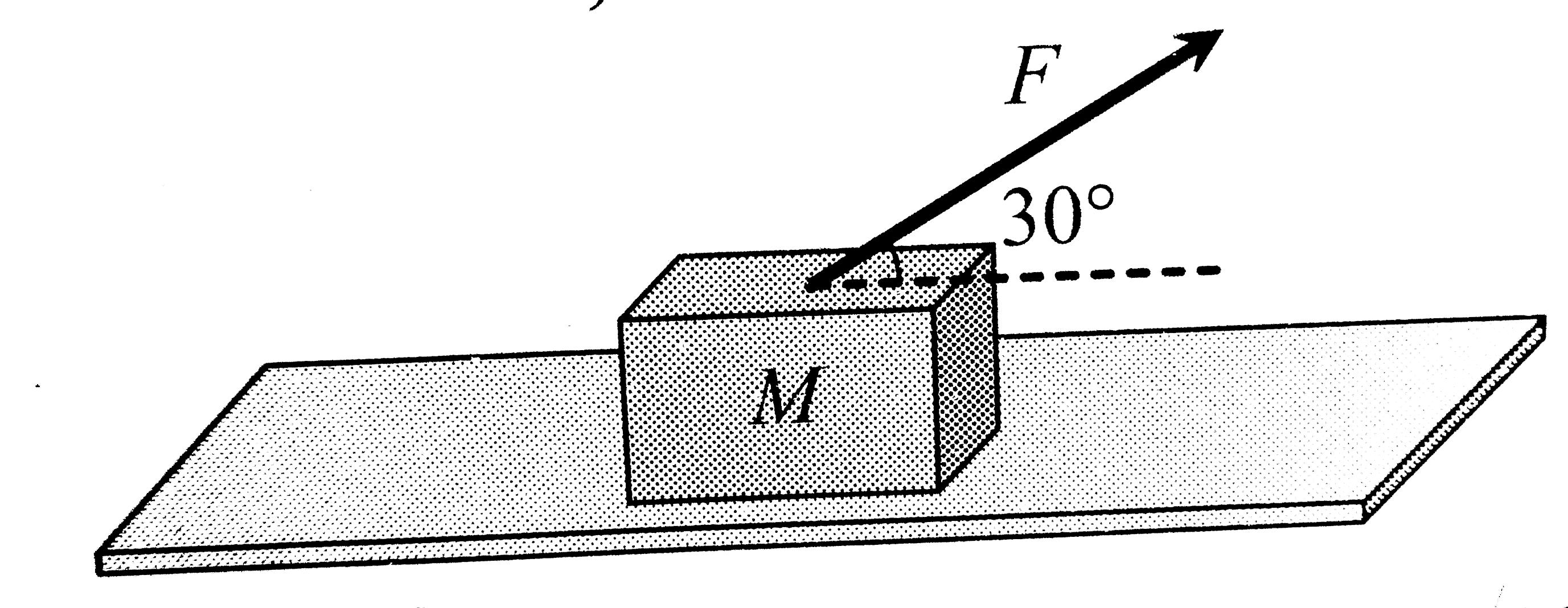A body of mass 5 kg rests on a rough horizontal surface of coefficient of friction 0.2. The body is pulled through a distance of 10 m by a horizontal force of 25 N . The kinetic energy acquired by it is (g=10ms2)
330 J
150 J
100 J
50 J
The correct Answer is:B
To solve the problem, we will follow these steps:
Step 1: Calculate the Normal Force (N)
The normal force acting on the body can be calculated using the formula:
N=mg
Where:
- m=5kg (mass of the body)
- g=10m/s2 (acceleration due to gravity)
Calculating:
N=5kg×10m/s2=50N
Step 2: Calculate the Force of Kinetic Friction (f_k)
The force of kinetic friction can be calculated using the formula:
fk=μN
Where:
- μ=0.2 (coefficient of friction)
Calculating:
fk=0.2×50N=10N
Step 3: Calculate the Work Done by the Applied Force (W_applied)
The work done by the applied force can be calculated using the formula:
Wapplied=F×d
Where:
- F=25N (applied force)
- d=10m (distance moved)
Calculating:
Wapplied=25N×10m=250J
Step 4: Calculate the Work Done by Friction (W_friction)
The work done by friction is given by:
Wfriction=−fk×d
The negative sign indicates that friction does work against the direction of motion.
Calculating:
Wfriction=−10N×10m=−100J
Step 5: Calculate the Net Work Done (W_net)
The net work done on the body is the sum of the work done by the applied force and the work done by friction:
Wnet=Wapplied+Wfriction
Calculating:
Wnet=250J−100J=150J
Step 6: Calculate the Kinetic Energy Acquired (K)
According to the work-energy theorem:
Wnet=ΔK
Since the body starts from rest, the change in kinetic energy is equal to the final kinetic energy:
K=Wnet=150J
Final Answer
The kinetic energy acquired by the body is:
150J
---
The normal force acting on the body can be calculated using the formula:
N=mg
Where:
- m=5kg (mass of the body)
- g=10m/s2 (acceleration due to gravity)
N=5kg×10m/s2=50N
The force of kinetic friction can be calculated using the formula:
fk=μN
Where:
- μ=0.2 (coefficient of friction)
fk=0.2×50N=10N
The work done by the applied force can be calculated using the formula:
Wapplied=F×d
Where:
- F=25N (applied force)
- d=10m (distance moved)
Wapplied=25N×10m=250J
The work done by friction is given by:
Wfriction=−fk×d
The negative sign indicates that friction does work against the direction of motion.
Wfriction=−10N×10m=−100J
The net work done on the body is the sum of the work done by the applied force and the work done by friction:
Wnet=Wapplied+Wfriction
Wnet=250J−100J=150J
According to the work-energy theorem:
Wnet=ΔK
Since the body starts from rest, the change in kinetic energy is equal to the final kinetic energy:
K=Wnet=150J
The kinetic energy acquired by the body is:
150J
Topper's Solved these Questions
Similar Questions
A body of mass 25 kg, is placed on a horizontal surface whose coefficient of friction 0.25. Find the frictional force action on it. Take (g=10ms−2)
View SolutionA block of mass 5kg is initially at rest on a rough horizontal surface. A force of 45N acts over a distance of 2m. The force of friction acting on the block is 25N. The final kinetic energy of the block is
View Solution
Knowledge Check
A body of mass 2 kg is placed on rough horizontal plane. The coefficient of friction between body and plane is 0.2 Then,
 Abody will move in forward direction if F = 5 NBbody will be move in backward direction with acceleration 0.5m/s2 if force F = 3NCif F = 3N, then body will be in rest conditionDBoth a and c are correct
Abody will move in forward direction if F = 5 NBbody will be move in backward direction with acceleration 0.5m/s2 if force F = 3NCif F = 3N, then body will be in rest conditionDBoth a and c are correctA body of weight 40 kg rests on a rough horizontal plane, whose coefficient of friction is 0⋅25. The least force which acting horizontal would move the body is
A10 kg wtB2 kg wtC30 kg wtD40 kg wtA block of mass 10kg is placed on a rough horizontal surface having coefficient of friction μ=0.5 . If a horizontal force of 100N is acting on it, then acceleration of the will be.
A0.5m/s2B5m/s2C10m/s2D15m/s2
A uniform force of 4 N acts on a body of mass 10 kg for a distance of 2.0 m . The kinetic energy acquired by the body is
View SolutionA body of mass 2 kg at rest on a horizontal table. The coefficient of friction between the body and the table is 0.3 . A force of 5N is applied on the body. The force of friction is
View SolutionA block of mass m=5kg is resting on a rough horizontal surface for which the coefficient of friction is 0.2 . When a force F=40N is applied, the acceleration of the block will be (g=10m/s2) .

View SolutionA uniform force of 4 N acts on a body of mass 40 kg for a distance of 2 m. The kinetic energy acquired by the body is
View SolutionA uniform force of 4 N acts on a body of mass 40 kg for a distance of 2 m. The kinetic energy acquired by the body is
View Solution
